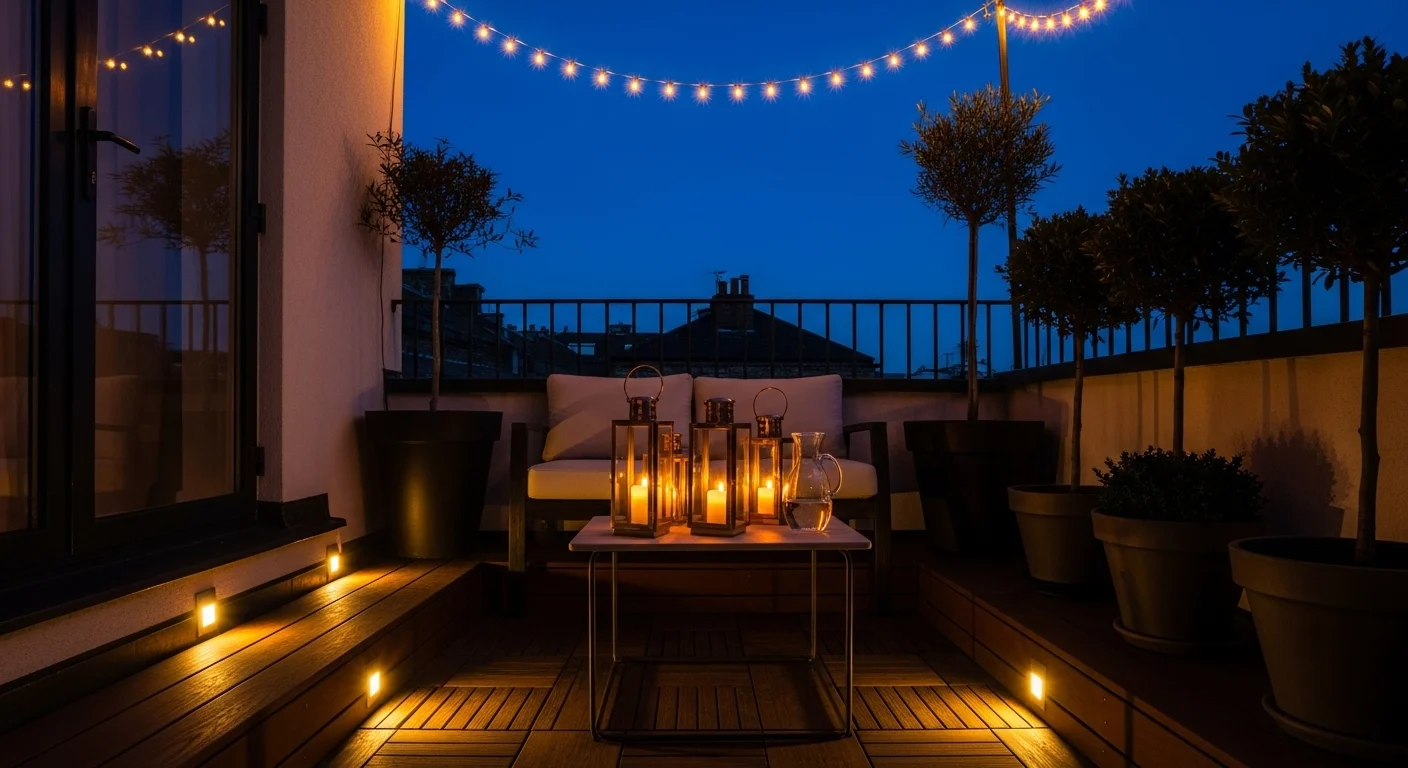Most balcony gardens fall into two categories: completely bare and depressing, or so crammed with random plants that you can barely step outside. You’ve probably seen both—maybe you’re even dealing with one right now.
Here’s what nobody tells you: a well-styled balcony garden isn’t about having the most plants or spending the most money. It’s about making smart choices that work with your actual space and lifestyle. A tiny balcony can feel like a lush retreat if you know what you’re doing, while a big one can feel cluttered and awkward if you don’t.
Whether you’re working with a narrow apartment balcony or a decent-sized terrace, these ideas will help you create something that actually makes you want to spend time outside. Some require a bit of DIY skill, others are plug-and-play simple, but all of them beat staring at concrete and a sad plastic chair.
Before You Start Buying Plants
Getting your balcony garden right means thinking through the practical stuff first. Skip this part and you’ll end up with dead plants and wasted money.
1. Know Your Sun Exposure
This matters way more than you think. Track your balcony throughout the day:
- Full sun (6+ hours) – Mediterranean plants, succulents, herbs, citrus
- Partial sun (3-6 hours) – Most flowering plants, some vegetables
- Shade (under 3 hours) – Ferns, hostas, shade-loving tropicals
- Which direction – South-facing gets intense afternoon heat, north-facing stays cooler
2. Check Your Weight Limits
Balconies have weight restrictions, especially older buildings. Wet soil is heavy, large planters are heavy, and furniture adds up fast. Check with your building management before loading up on massive terracotta pots.
3. Consider Wind and Weather
High-rise balconies get crazy wind that dries out plants and can knock things over. Coastal balconies deal with salt spray. Hot climates need shade solutions. Think about what your specific balcony faces and plan accordingly.
4. Understand Your Building Rules
Some buildings have strict rules about drilling into walls, hanging things over railings, or what colors you can use. Check your lease or HOA rules before committing to built-in solutions.
15 Elements for Styling Your Balcony Garden
1. Integrated Planter Bench
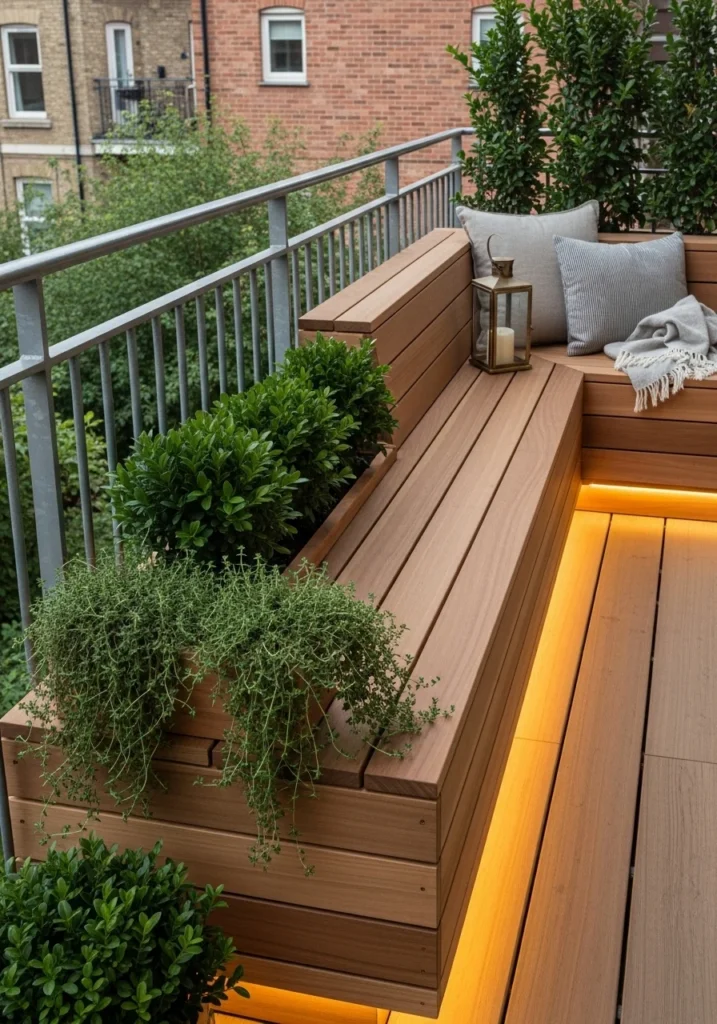
A teak or cedar bench with built-in planters underneath is genius for narrow balconies. The bench runs along your railing.
Add a linen throw and maybe a brass lantern for styling. Install discrete warm LED strips under the bench for evening ambiance. This gives you seating and greenery without taking up extra floor space.
Perfect for balconies where you need every piece of furniture to multitask.
2. Vertical Living Wall
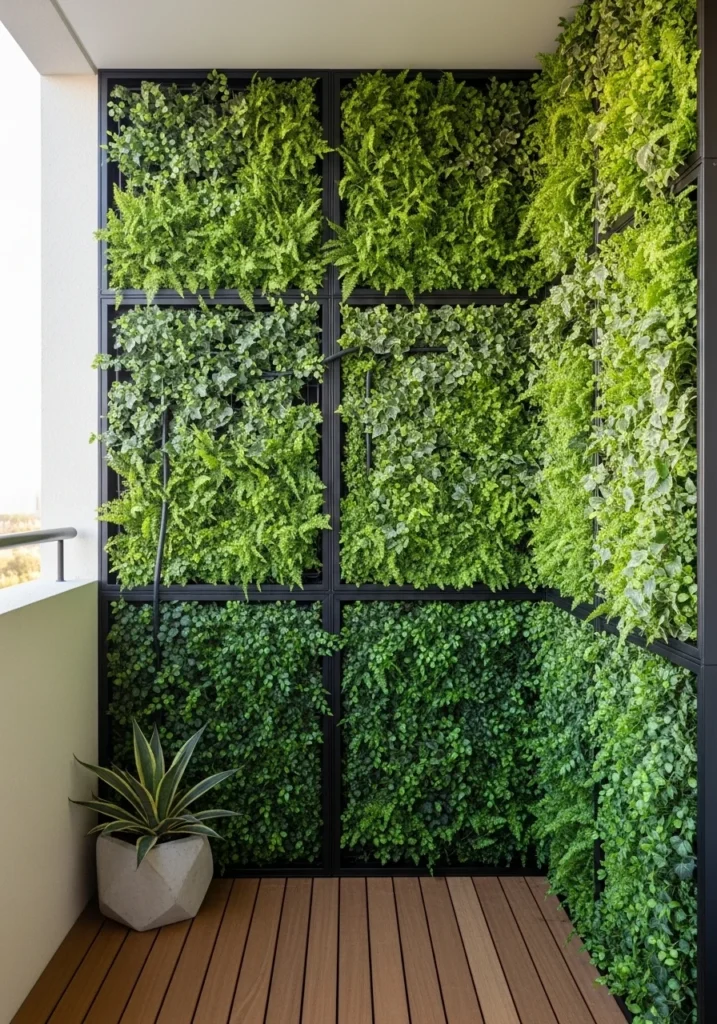
Full-height modular living wall panels with mixed ferns and small-leaf ivy create serious visual impact. Use slim black aluminum frames with concealed drip-irrigation so you’re not constantly watering individual plants.
These work especially well on walls that get indirect light. Add a sculptural concrete planter at the base with something dramatic like an agave for contrast.
This is the move for modern urban balconies where you want lush greenery without sacrificing floor space.
3. Rail-Mounted Herb Rail
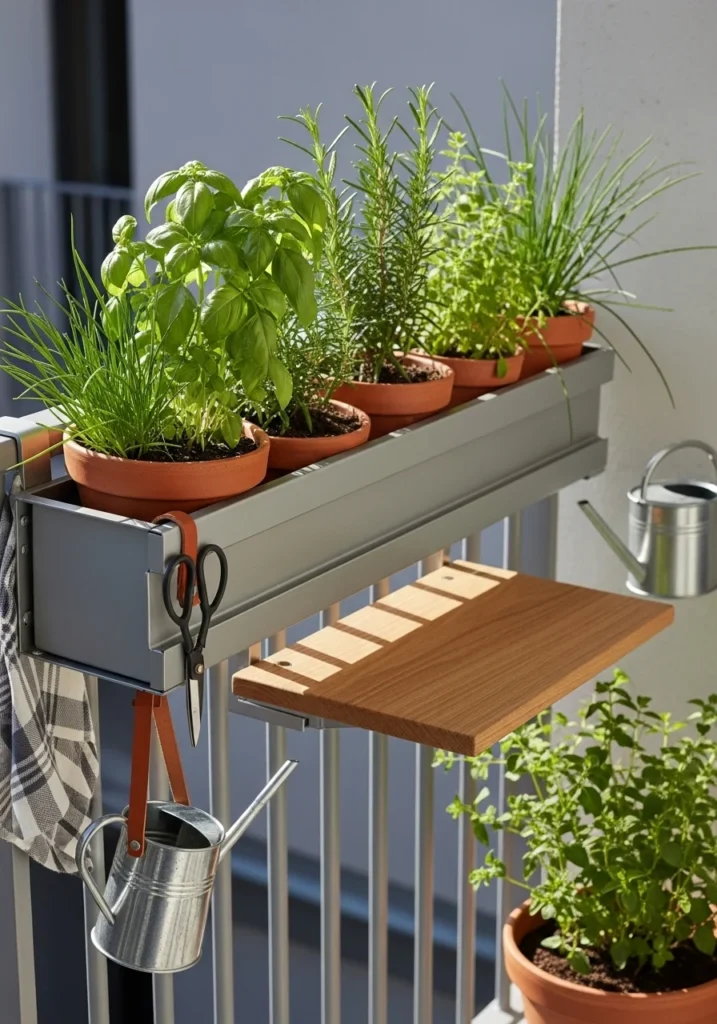
Rail-mounted powder-coated planters holding terracotta pots of basil, rosemary, oregano, and chives are both functional and beautiful. Add a fold-down prep shelf attached to the railing for an actual kitchen herb station.
Hang herb scissors on a leather strap for that designer utilitarian look. Sunlit balconies are perfect for this—fresh herbs need good light and you get to use them for cooking.
This setup pays for itself after a few months of grocery store herb prices.
4. Narrow Water Rill
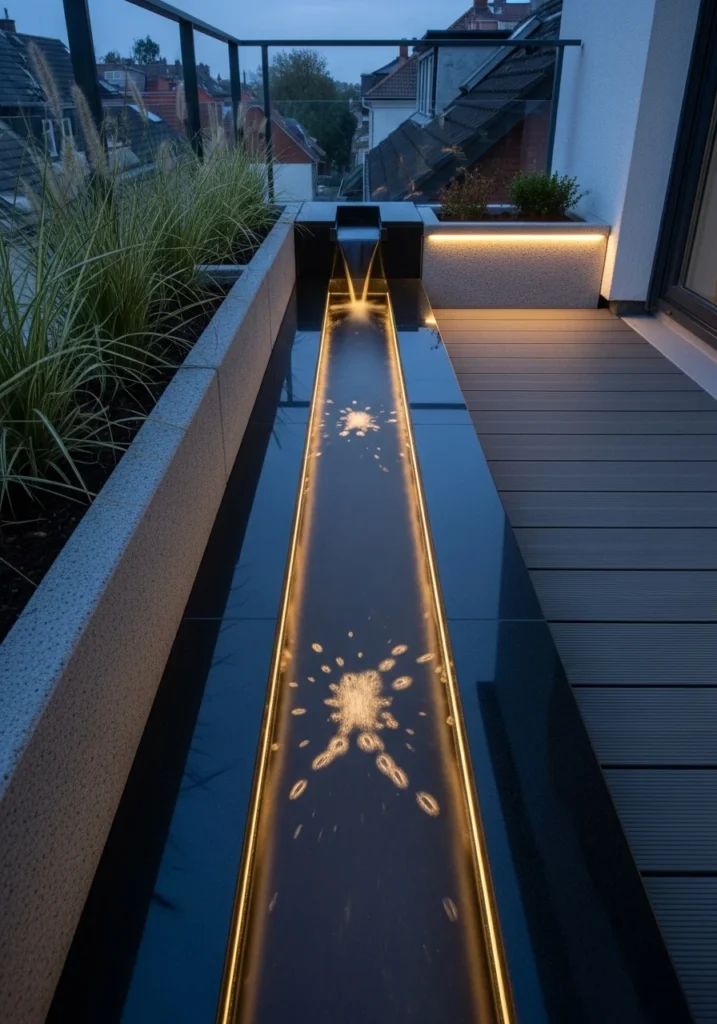
A slim basalt water rill inset along one side creates soothing water sounds without taking up much space. The polished black stone channel with quiet bubbling flow adds serenity without the bulk of a traditional fountain.
Add LED strip lighting under the water lip for subtle shimmer at night. Pair with low planters of ornamental grasses for a zen effect.
Perfect for creating that luxury spa feeling even on a compact balcony.
5. Smart Self-Watering Pots
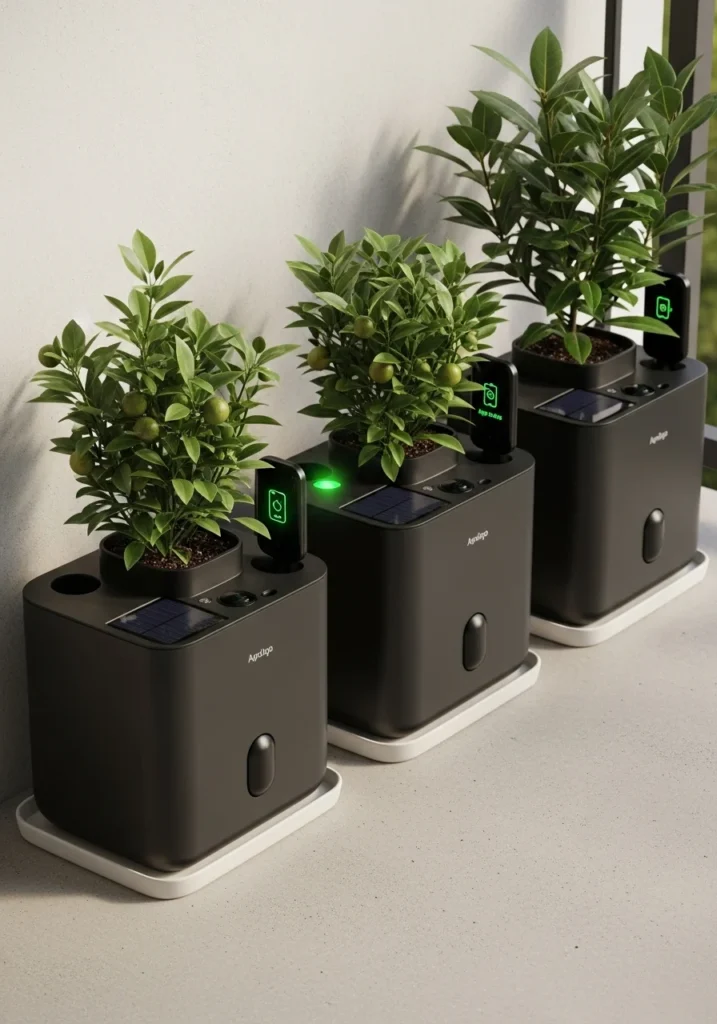
Matte-black self-watering planters with integrated moisture sensors and small solar panels are game-changers if you’re not home consistently. The app-status LED indicators tell you when plants actually need attention.
These work great for dwarf citrus or bay laurel—plants that need consistent moisture but hate being overwatered. The tech does the thinking so you don’t kill expensive plants.
Worth the investment if you travel for work or just forget to water regularly.
Also Read: 14 Small House Exterior Ideas That Prove Size Doesn’t Determine Style
6. Mediterranean Terracotta Cluster
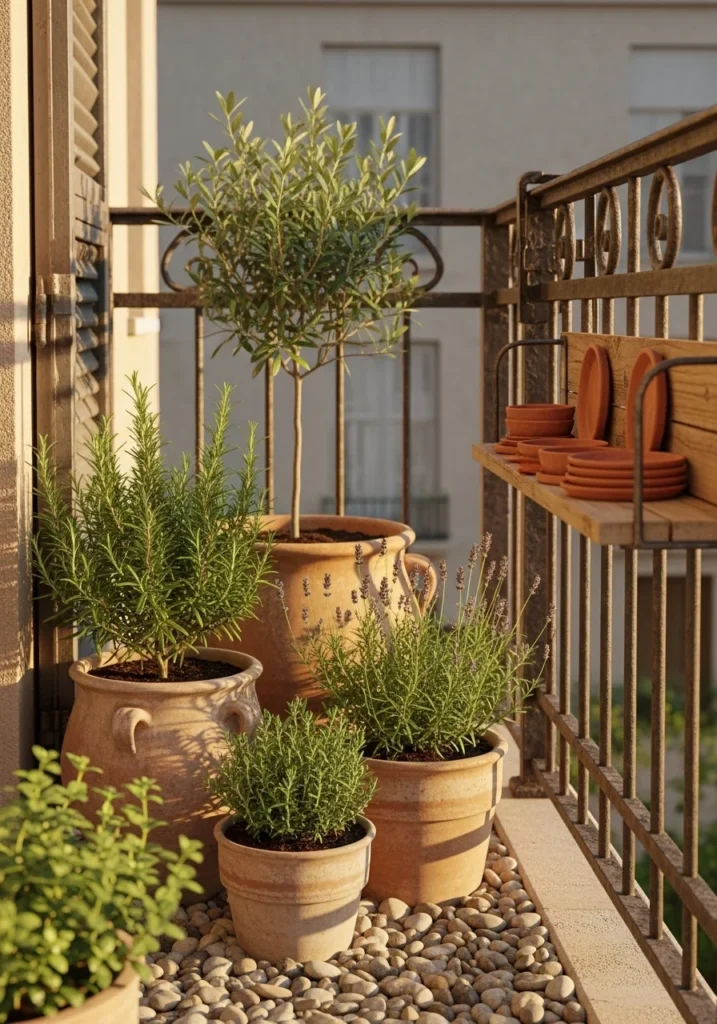
A cluster of aged terracotta pots with an olive sapling, rosemary, and dwarf lavender creates that coastal-European richness. Add pebble groundcover and display on a narrow reclaimed-wood shelf.
Golden-hour light makes these pots absolutely glow. The patina and texture add warmth that plastic pots never achieve.
This look works on any sunny balcony and feels way more expensive than it actually is.
7. Tropical Shade Pocket
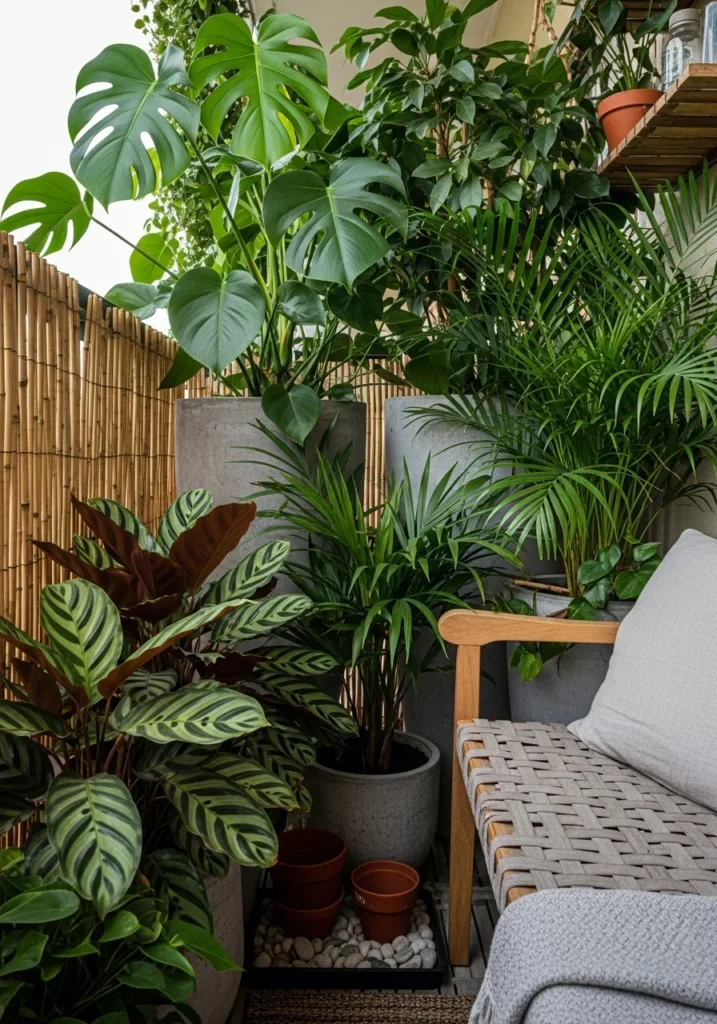
Shaded balconies need shade-loving plants like monstera, calathea, and small fan palms in tall glazed planters. Add a woven teak bench with pale linen cushions and a bamboo privacy screen.
The layered foliage creates a cozy retreat vibe even without direct sun. Use humidity-friendly accents and pebble trays to keep tropical plants happy.
This setup turns a “disadvantage” (no sun) into an actual design feature.
8. Minimal Zen Corner
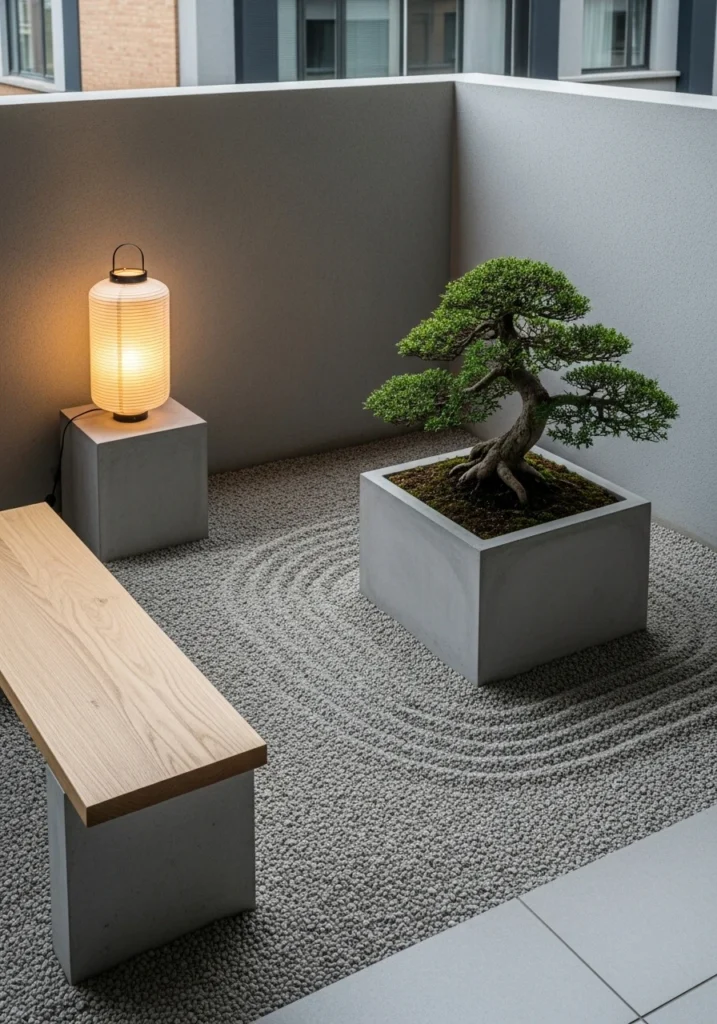
A tiny zen corner with a smooth poured-concrete planter holding a single sculptural bonsai, raked gravel ground, and narrow oak bench creates calm without clutter.
Add a paper lantern on a low plinth for evening lighting. The negative space is the design—you’re not trying to fill every inch.
Perfect for minimalists who want something beautiful but low-maintenance.
9. Evening Ambience Kit
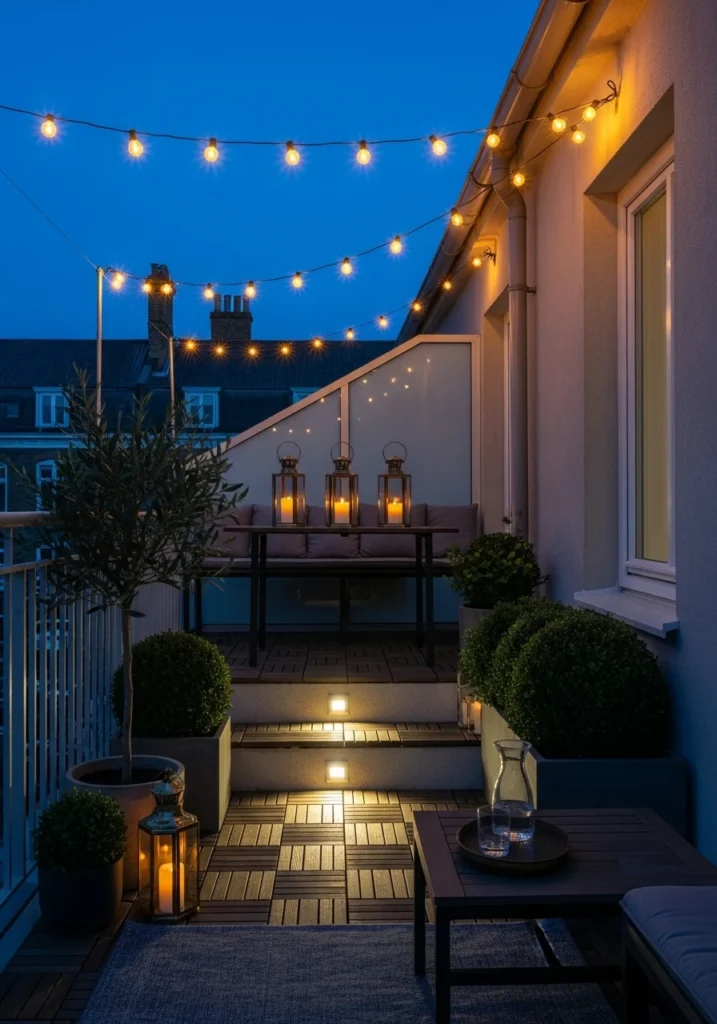
Warm festoon lights zigzagging above, brass lanterns on surfaces, and recessed step lights in the decking create layered lighting for after-dark use.
The combination of overhead, surface, and ground lighting makes even basic plantings look magical at night. Add a small table with a glass carafe and some candles for entertaining.
This is what separates balconies that get used from ones that sit empty after sunset.
10. Succulent & Rock Tray
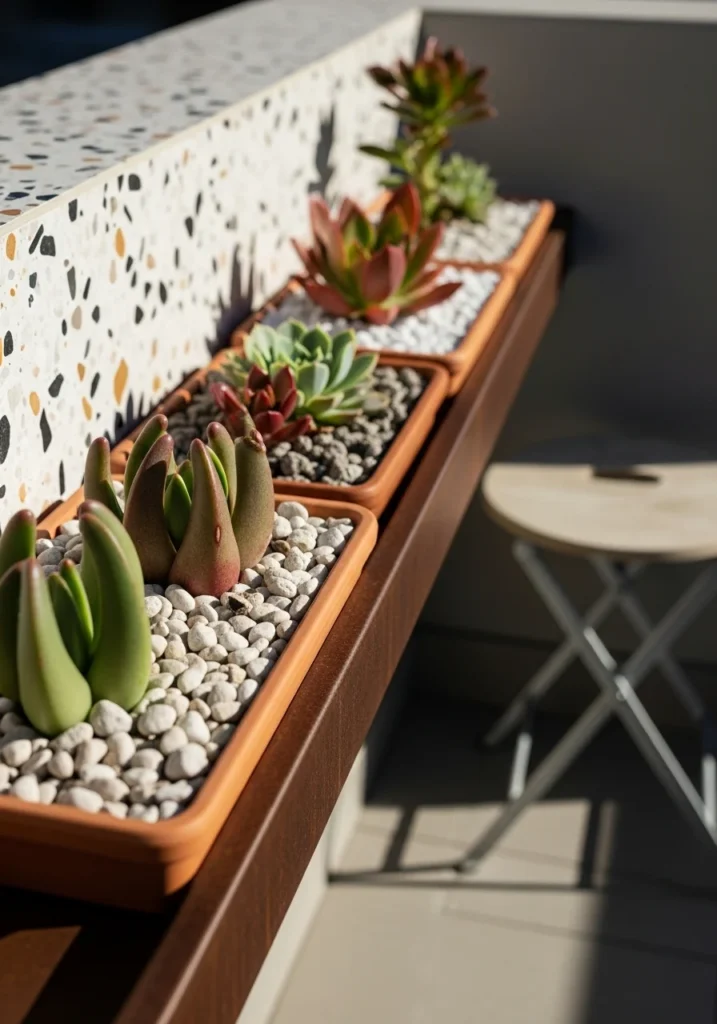
Shallow terracotta trays with sculptural succulents, pumice, and white pebbles work beautifully on hot, sunny balconies. Mount on an oxidized steel planter rail for modern industrial vibes.
The refined low-water design looks intentional and requires minimal maintenance. Add a terrazzo tile splash behind for texture and color.
Great for full-sun balconies where most plants would crisp up and die.
11. Dwarf Fruit Tree Nook
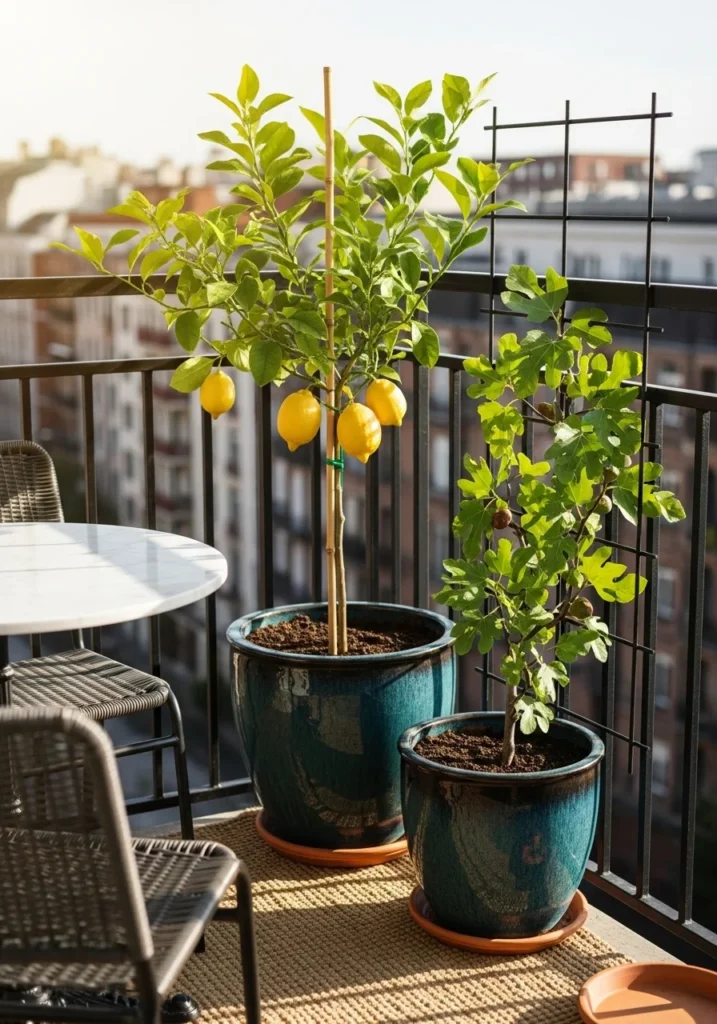
A large glazed planter with a dwarf lemon tree trained on cane, plus maybe a small espaliered fig on a rail trellis, gives you actual fruit in a tiny space.
Pair with a compact bistro set and natural jute mat. The fruit-forward balcony feels productive and beautiful at the same time.
This works if you have decent sun and are willing to do a bit of pruning and maintenance.
12. Patterned Tile Accent
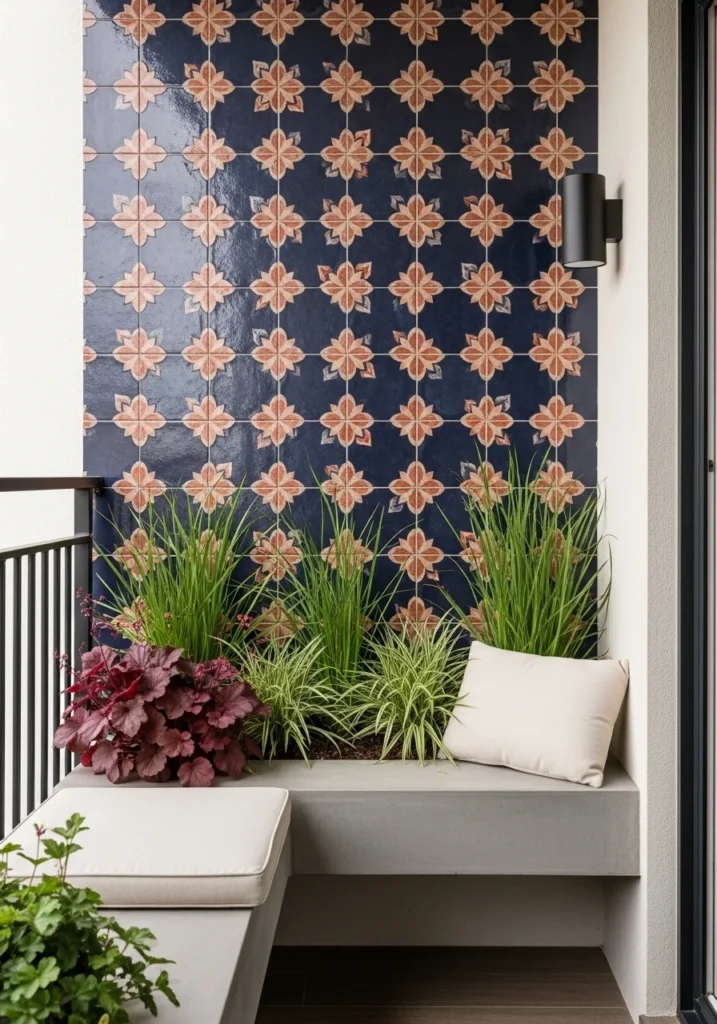
One wall of encaustic patterned tiles in navy and terracotta paired with a linear planter bench in matte concrete creates a high-end focal point.
Fill the bench planter with mixed grasses and heuchera. The tile becomes the luxury anchor that makes everything else look more intentional.
This is the move when you want your balcony to feel like a designer space without filling it with stuff.
13. Dual-Use Workspace & Green Screen
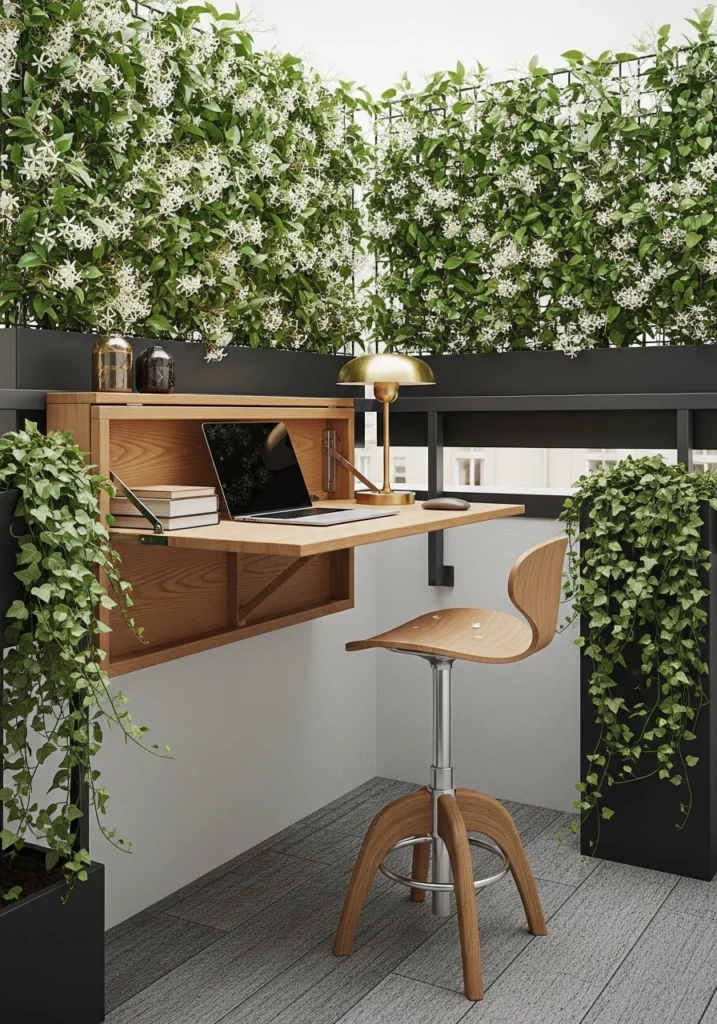
A fold-down oak desk mounted to the railing with a slim planter behind as a privacy green screen of star jasmine lets you work outside.
Add an ergonomic stool that tucks under and a narrow floor planter with trailing ivy. The green screen provides privacy for video calls while keeping things fresh and living.
Perfect for remote workers who want outdoor workspace without sacrificing balcony garden vibes.
14. Bird-Friendly Balcony
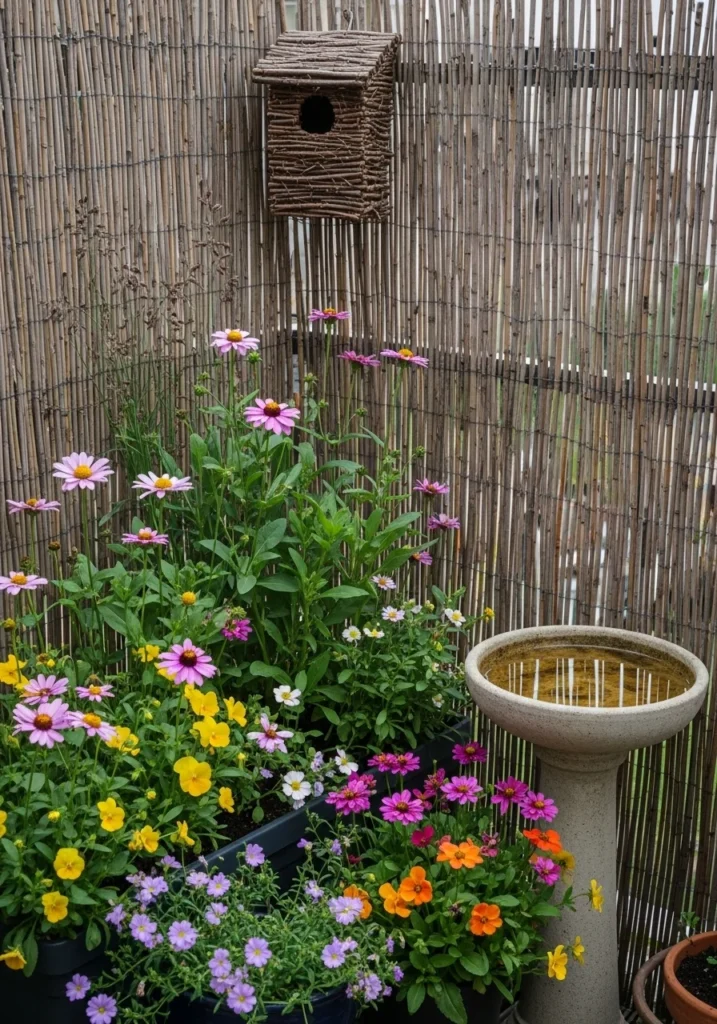
Native-flower planters, a small ceramic birdbath on a pedestal, and a twig nesting box create habitat even in urban settings.
Plant nectar-friendly flowers and seed-friendly grasses. The refined nature-first approach brings wildlife to your space while still looking intentionally designed.
This works especially well if you want your balcony to feel connected to nature rather than just decorated.
15. Seasonal Modular Planters
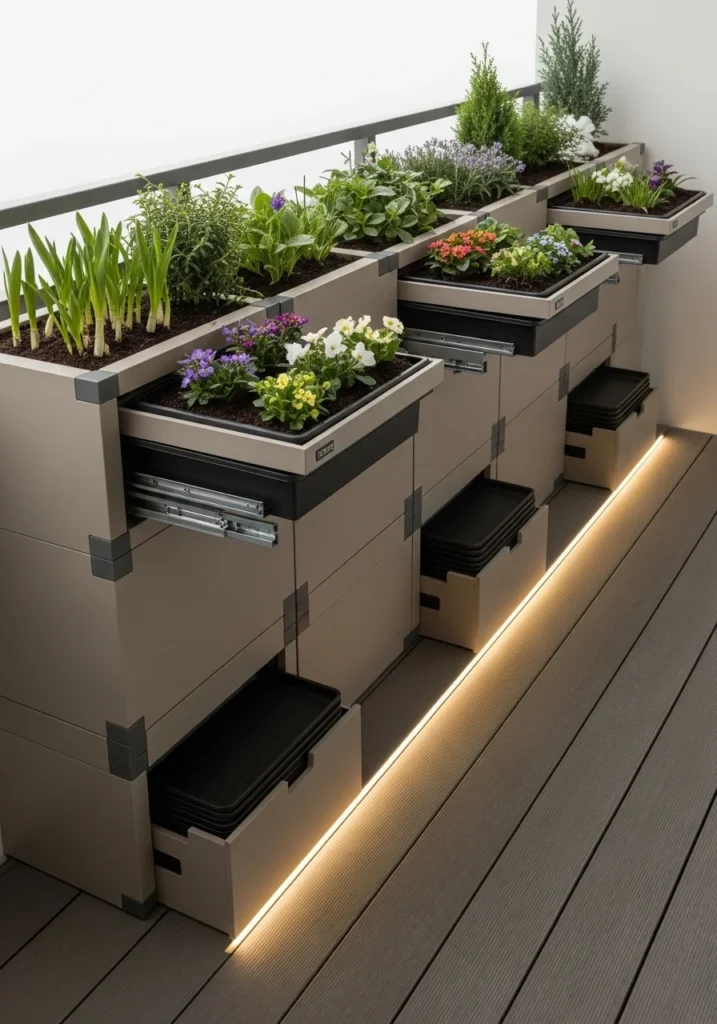
Stackable modular planters with quick-release trays let you rotate seasonal plantings—spring bulbs, summer annuals, winter evergreens—without replanting everything.
Add recessed drainage channels and hidden storage for spare trays. Install discreet LED rim lighting for winter evenings when days are short.
The practical luxury of easy seasonal changes means your balcony never looks tired or off-season.
Final Thoughts
Styling a balcony garden isn’t about copying some Pinterest board exactly or spending thousands on fancy planters. It’s about understanding your specific space—the light, the size, the practical limitations—and making smart choices that work with what you’ve got.
The best balcony gardens are ones that actually get used. If your setup is too high-maintenance or impractical, it’ll end up neglected no matter how good it looks in photos. Start with one or two elements that solve your biggest pain points, then build from there.
Your balcony should be the place you actually want to hang out, not just another space that looks good but feels like a chore. When you find yourself choosing balcony time over scrolling on the couch, you’ll know you’ve gotten it right.Retry

